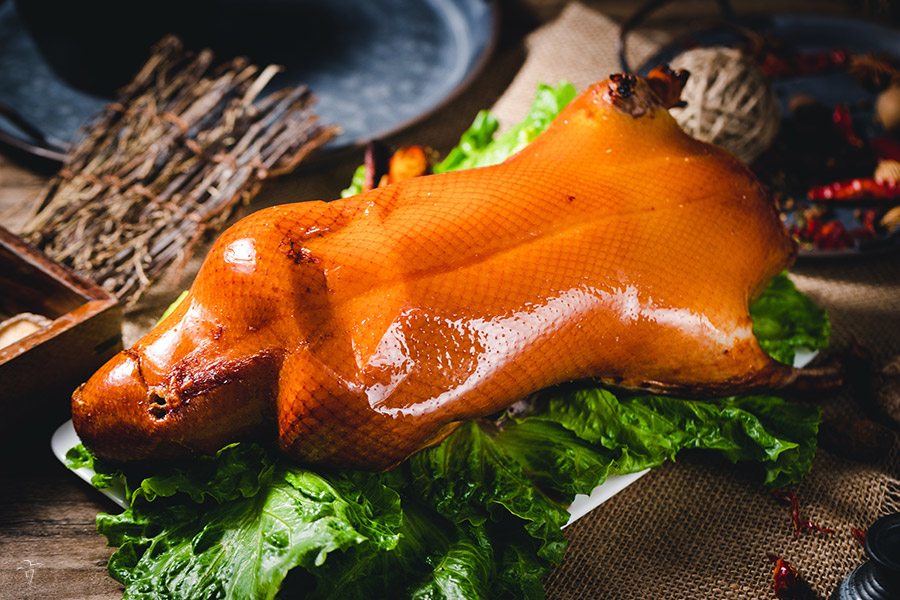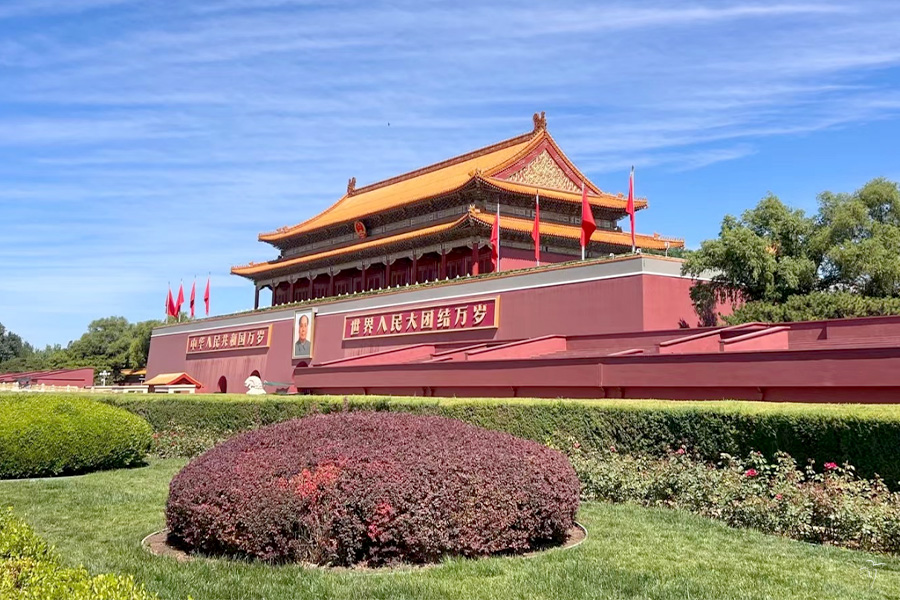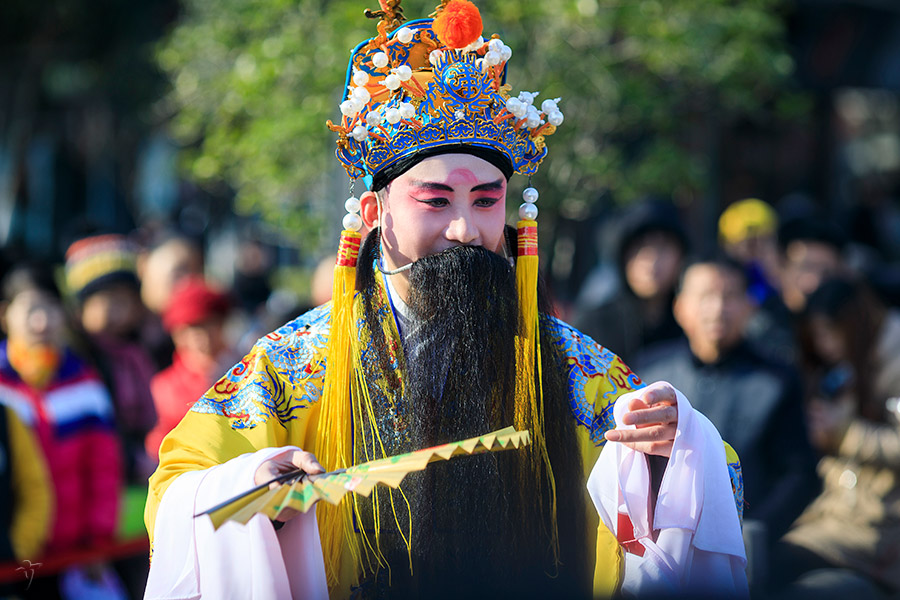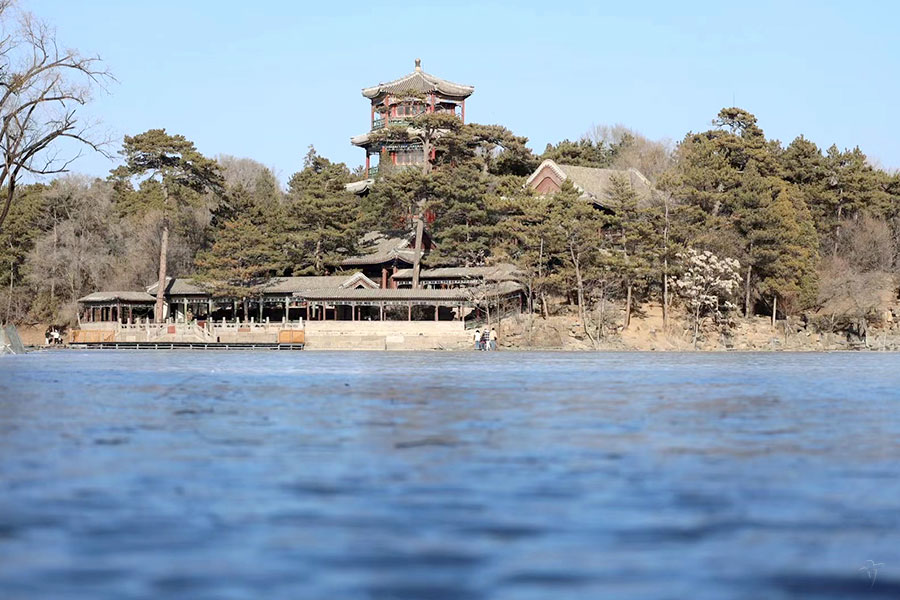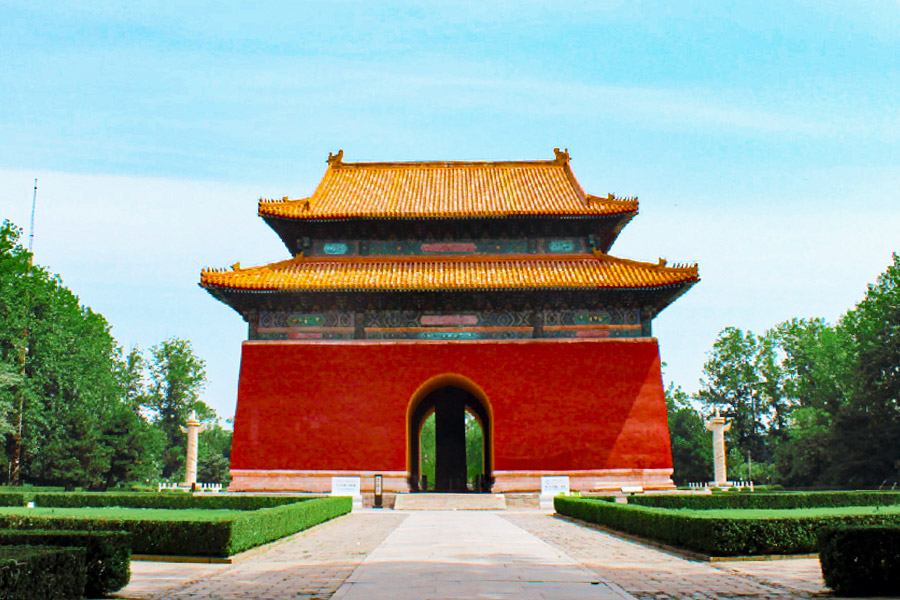Badaling Great Wall
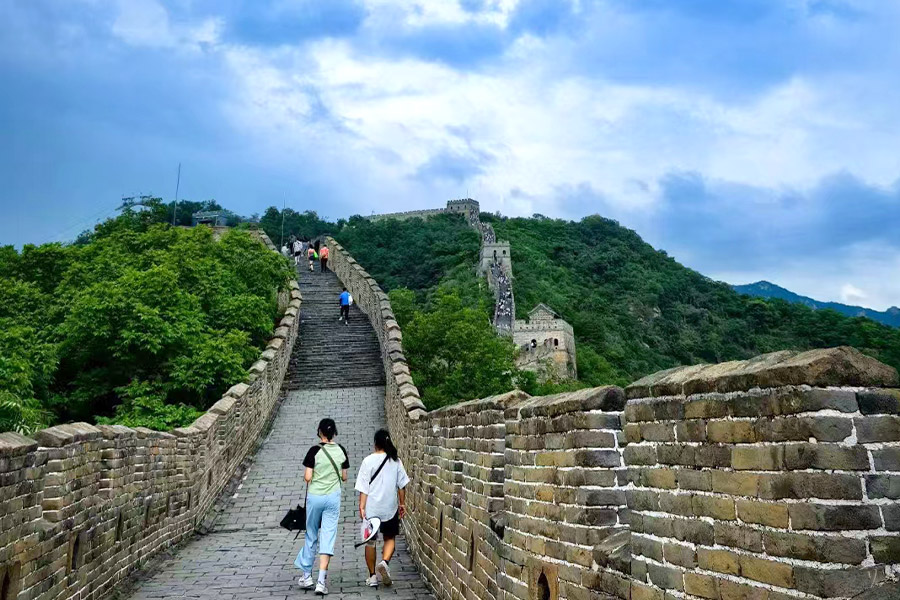
Chinese name: 八达岭长城 (Badaling Changcheng)
Location: Yanqing County, about 70 kilometers northwest from Beijing, Beijing Municipality, Northern China.
Great Wall total length: 6,260 km (3,890 miles)
Badaling section length: about 7,6 km
Opening hours: 06:30-19:00 (Summer)
07:00-18:00 (Winter)
How to get there:
- Private car/bus (about 90 minutes' journey)
- Bus: No. 919 (downtown Beijing-Badaling Great Wall: take the bus at Deshengmen Gate, then about 15 minutes walk to the entrance of Badaling Great Wall section), make sure to take the official bus line and not mini-buses with a little sign written "919" on it. By arriving at the bus station, travelers can take the cable car ride onto North Tower No.8.
- Train: Beijing North Railway Station – Badaling Train Station (usual trains for reference only: No.Y567, Y575 and Tour Train No.9, about 1h10 min journey). From Badaling Train Station, walk about 15 minutes to the entrance of the section of the Great Wall.
Best time for visit: all the 4 seasons, each season having its pros and cons. Just try to avoid visiting the Great Wall in bad weather (heavy rain, storm or thunderstorm), for it can be slippery and dangerous for your own safety.
Recommended time for a visit: half a day
One of the most outstanding section of the Great Wall
Most famous attraction of China, the Great Wall is definitely a symbol of the country as well as Chinese civilization in general. The six different sections of the building opened today to tourism have different characteristics that can easily be recognized. The Badaling section is the most representative section of the Great Wall as well as the most famous among tourists coming to visit China and its awe-inspiring beauty. Real priceless cultural heritage of humanity, Badaling is the best preserved and interesting section amongst all the sections of the Great Wall stretching for about 7,6 kilometers and originally built as a strategic building for transportation and defense in ancient times. Literally meaning "reach eight directions" (八达岭), Badaling Great Wall was named for the maze of its ridges stretching in all directions, facing the enemy from far away. Indeed, this part of the building was known as one of the most strategic key point to entering the Imperial city of Beijing from its North Gate. Standing bravely since the Qin Dynasty (221 BC - 206 BC) at the outskirts of the present modern Beijing, the Great Wall is the most impressive and grandiose attraction to visit in China. Together with the cultural relics that can be admired, the residual part of the Great Wall, restaurants, cinema and hotels give to travelers the opportunity to spend a great time in one of the most symbolic places of China.
History of the Badaling Great Wall
The Great Wall is one of the oldest fortifications constructed for military use thousands of years ago and still standing proudly at a few kilometers away from the capital of Beijing. The masterpiece started to be built as early as the Qin Dynasty (221 BC – 206 BC) and the reign of Qinshihuang (246 BC - 221 BC) who succeeded in unifying the nation although still attacked by northern nomadic tribes in the north. The construction of this immense defensive wall mobilized hundreds of thousands of men and resulted in the building of a precursor to the current Great Wall of China, connecting first numerous state walls together.

The section located in the northwest of Beijing took the name of Badaling, which was especially perfected and reinforced during the Ming Dynasty (1368-1644) and the noticeable reigns of Emperors Hongwu (1368-1398) – also known as Zhu Yuanzhang or Taizu of Ming – and Emperor Hongzi (1487-1505). With the capital of the nation moved from Nanjing to Beijing in 1420, the necessity to consolidate the fortified wall was pivotal to the survival of the kingdom, the vast project of extending the Great Wall to farther in the interior lands started by 1488. Active defensive wall of the inner kingdom of the emperor, Badaling section architecture is the living testimony of the battles that happened in ancient times in the area. The fall of the imperial governance of China at the end of the Qing Dynasty (1644-1912) had the effect to let the Great Wall abandoned to nature. Completely deserted for other major historical events were occurring in the capital and other regions of the country, the Great Wall started to fall apart, far away from people's attention.
The formation of the People's Republic of China in 1949 marked a turn into the rehabilitation of the large-scale building into the nation's cultural and historical heritage. With the intention to show the construction to visitors of mainland China and from abroad, the country started to repair some areas left abandoned for years: city towers, bodies of the city wall, buttress and walls had been destroyed due to man's disdain. Since 1957, the Great Wall is opened to the public in some of its sections registered in present time to a number of 6.
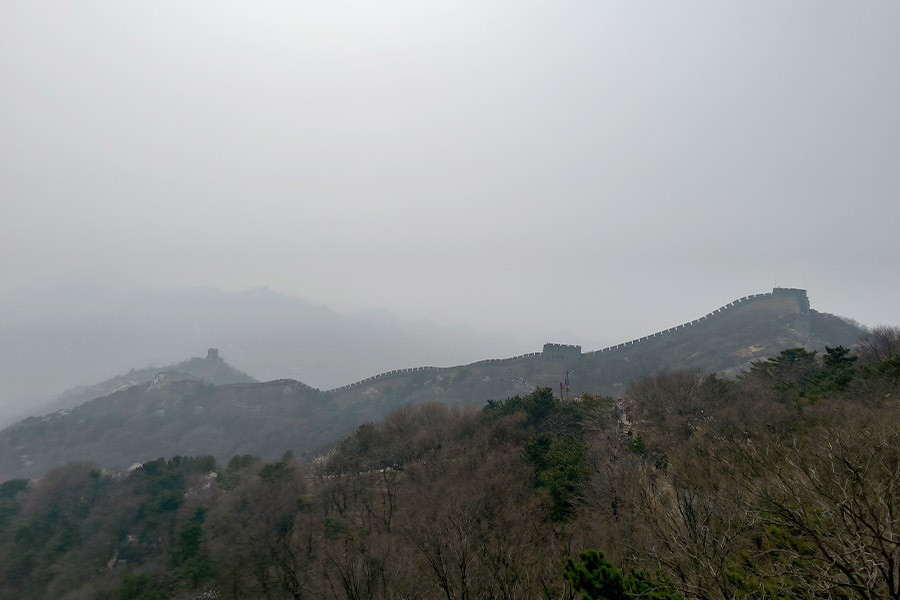
Starting from that date, the status of Badaling Great Wall and the whole Great Wall in general got better. Indeed, several historical and political events put forward the preservation of the unique building such as the recognition as China's significant cultural relic unit by the State Department in 1961, or the speech of the politician and diplomat Deng Xiaoping in 1984 about "Loving our China, repairing our Great Wall" to speed up the modernization of the country based in some ways on the development of tourism. Chosen as the one scene of Beijing out of the 16 possible, the Great Wall continued its revival until the consecration in 1988 to the rank of a UNESCO World Heritage Site. That was the period when the Badaling section started to be referred to as the representation of the 10,000 miles Great Wall and the certificate of human cultural heritage site. Being awarded two World Guinness Records in 2001, for receiving the most important number of visitors and of state leaders, the Badaling Great Wall gained further reputation in July 2007 when listed among the New Seven Wonders of the world. Real symbol of China and its fabulous history and culture, the Great Wall and Badaling section is the soul of the whole Great Wall, welcoming travelers from all over the world.
Badaling in depth
The Great Wall, long of 6260 kilometers stretches into several provinces among which the Gansu, Ningxia, Shanxi, Shaanxi, Liaoning and Hebei Provinces, all having parts of the Great Wall in some extent. Starting in the Yalu River, Eastern China, the building ends at Bulongji in Gansu Province.

Badaling Great Wall is one of the longest sections the most popular among tourists and visitors. 7,6 kilometers long, the section stands at more than 1,000 meters (3281 ft) above the sea level and is about 6 meters (20 ft) wide, allowing in ancient times around five horses to gallop on the wall body of the building. Ranked as the most magnificent amongst all sections, Badaling is mainly made of tall granite slabs forming very solid walls. The mountains slope where the section is located is very steep and tortuous, a real wonder when thinking about the hundreds of thousands of men who worked there night and day for realizing the emperor's wish and constructing a perfect military stronghold. Major city platforms, enemy-watching watchtowers, signal fire platforms and parapets are set for the greatest pleasure of travelers looking for a deep insight into what used to happen in ancient times on this fortification. One can notice the numerous small holes drilled on the wall that were created for archers to shoot arrows on the invading enemy. Badaling and the whole Great Wall's construction in general have been a paramount of fortification when considering every wall details.
Badaling Great Wall is in many concerns the section that visitors would love to photograph the scenery around being raw and filled with numbers of historical and wartime relics. Its location at the northwest of Beijing capital was already in ancient times a strategic one as the outside of the Guan city Gate was indeed the key point to the actual North Gate of Beijing. By visiting the site, visitors can see the ancient plaque mentioning the importance of the place: "Beimen suoyue ", literally "the Key to the north Gate of Beijing ".
What to see in the Badaling Great Wall today?
This may be hard to advice about what to see exactly in Badaling Great Wall today as everyone knows that actually the whole thing is about visiting the Great Wall of China, or at least one of its many sections. Badaling is amongst all visits the most exhaustive providing with high-quality services and attractions including cinema, museum, cable car or pulley, shopping and dining facilities. Visiting Badaling, one should pay attention to the magnificent sceneries, paths, pavements and steps paved with granite slabs and handrails. Two options for climbing to the top are at the disposal of tourists: by cable-car or by steps. Depending on the way you take, Badaling is giving different insights to its visitors but all of the same final impression: grandiosity. Some nearby attractions such as the imperial cemetery of the Ming Tombs can also be visited on the way to Badaling. Beautiful in every four seasons, Badaling is enchanting by the many different sceneries providing to its visitors, coming worldwide to live one of the most impressive tour experience in their life.
- Along the four seasons
One of the most impressive things about the Great Wall is that it keeps its grandiose character and makes people marvel at its creation whatever the time and seasons you get to visit it. Spring is the occasion to see Badaling with surrounding lush vegetation, green mountains all together with a pleasantly warm breeze. Although hot in summer, Badaling is still the best place to go as the sky is perfectly clear and the sun is reflecting on every single stones of this human masterpiece. Looking for a cooler temperature when hiking this top scenic spot, autumn will be the best option as the surrounding vegetation starts to take on some red and orange colors. Finally, winter and its thick snow coat recovering the whole Great Wall is a magic time for experiencing such a visit, though travelers should be careful of their own security for not slipping. For hiking this section, travelers should take care of wearing comfortable clothes and some sun protection especially during spring and summer time. In winter, sub zero temperatures can be felt, so make sure to take enough clothes with you. Climbing up the Great Wall and looking afar, all the mountains and valleys show up for the most impressive sights ever seen. The outline of the Great Wall is definitely gorgeous.
- The Badaling Ruins Great Wall Natural Scenic Spot
Making the fame of Badaling, especially for international tourists, some parts are today preserved ruins ranked as a natural scenic spot of the Great Wall. By seeing the dilapidated wall, one can imagine the ancient wars that used to tale place there. Constituting the fragmentary beauty of age-old culture, ruins of Badaling Residual Great Wall express the real age of the Great Wall that seems unmoving for thousands of years. By staring at each brick and stone, each grass and tree tourists enter the historical yesterday, with the possibility of making awesome photographies that still show the magnificence of the Great Wall of China.
- China Great Wall Museum
Located near to the entrance of Badaling section, the Great Wall Museum is a highlight for everyone looking for more information about the building. This special-topic museum recounts the historical evolution, construction and facilitation of the Great Wall since the earliest Dynasties. Completed in 1944, the museum is where to have a rest and learn about China's outstanding evolution.
- Ancient cliff dwellings
Famous all over the world, cliff dwellings are something to be seen in other parts of the world but here, the location of this type of dwelling near to the Great Wall at Badaling is a pure highlight making the whole day of travelers together with the visit of the Great Wall. The Badaling ancient cliff dwellings, Guyaju is a historical site of 1000 years sitting in a tranquil gorge in the northwest of Beijing. Intriguing house complex set in a luxuriant lush vegetation and forest, Guyaju has more than 110 stone rooms varying in size, interlinked perpendicularly and interconnected horizontally. To reach one part to another, some stone steps and stone ladders are used. Travelers visiting the site will have the chance to stand on the upper floor and see a superb panorama of the nearby areas. Guyaju ancient cliff dwellings are definitely the largest and most beautiful cliff residence ever discovered in China!
- Zhan Tianyou Memorial
As the supervisor and chief engineer of the Badaling Railway Station in 1905, Zhan Tianyou had the responsibility creating the highest section of the whole railway, going through the steep Guanou area of Jundu Mountain. Under construction for 4 years, the work was completed linking Beijing-Zhangjiakou and Badaling in little bit more than 1 hour and opened to the public in October 1909. The Memorial is to remember this important achievement to tourists and pay tribute to the man who accomplished such a great job for China.
- The Great Wall Circular Cinema
Curious place to see near to Badaling Great Wall should be the Circular Cinema, located near to the North Gate key point. Occupying around 1800 square meters, the Great Wall Circular Cinema is like its name suggests it a full-circle cinema where travelers can have a rest to discover the history and the many cultural relics of the scenic spot and of the Badaling section. Two parts are to be distinguished: the projecting hall and the audience hall. The projecting hall is 20 meters in diameter, divided into 3 floors. In total, 9 pieces of screens and 9 projection machines are there to display the big movie around the Great Wall. The whole cinema can hold 500 persons at the same time. When the movie "The Great Wall" was launched, about 10,000 spectators were registered to come seeing the movie when it was on the top line.
- Badaling Hotel and nearby authentic villages
After or before visiting the Great Wall, there may be some travelers looking for some rest sat around a good table with some of the most exquisite dishes of northern China. The Badaling Hotel located at the foot of the Great Wall is a high-rated hotel available for meetings, tourism and other business matters. Praised by Chinese celebrities but also international one such as the British Queen or some American Presidents, the Badaling Hotel is the place to stay in Badaling and "taste" China.
For those looking for some typical Chinese landscape views and deeper impression on Chinese lifestyle, a half day break in the countryside surrounding the Badaling Great Wall is a good experience to live. There, some farmhouses and villages wait for your coming, making you see the real life of people, the traditional architecture of the housings and the local dialects differing from the standard Putonghua spoken in Beijing. Having a farmer's meal and sharing the experience of a farmer's life in Chadao Folk Village (岔道民俗村, cha dao min su cun), experiencing rural life for a few hours, seeing some old temple and meet real people: a nice program that gives everlasting souvenirs to the most adventurous travelers.
Recommended Reading: China Great Wall Hiking
Beijing tours
Quick Questions
Our team is waiting for your questions. Please feel free to ask us any questions you might have about our China package tours, Chinese culture, or the sites available. We will gladly help you with any special needs you might have and all questions, like our trip designing is completely free of charge.



